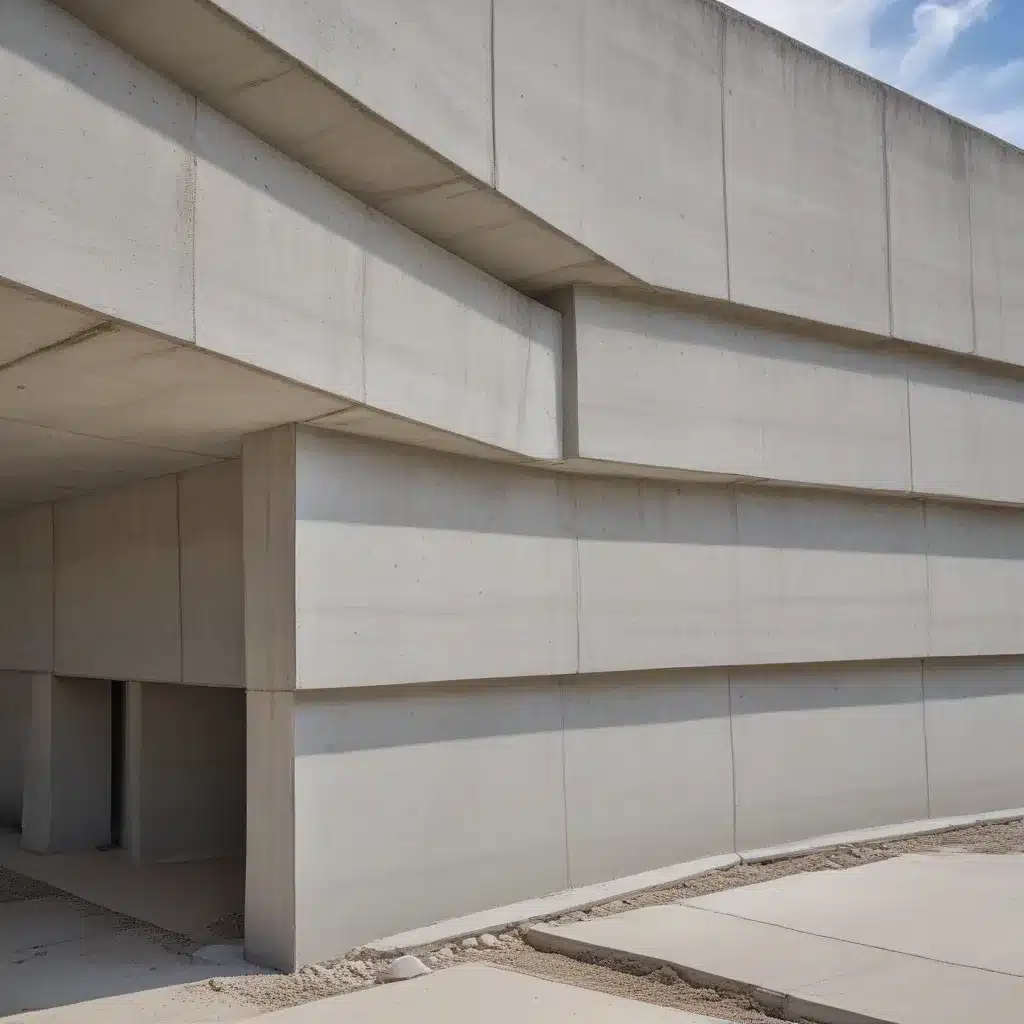As someone who has spent a lifetime in the world of construction, I’ve come to appreciate the unparalleled strength and durability of concrete. It’s a material that has been used for centuries, and yet it remains one of the most versatile and reliable building materials available.
The Enduring Power of Concrete
Picture this: you’re walking down the street in downtown Nashville, admiring the towering skyscrapers and sturdy bridges that have stood the test of time. What do they all have in common? Concrete. This remarkable material has been the foundation of some of the most iconic structures in our city, and for good reason.
Concrete is built to last, with a compressive strength that far exceeds that of other commonly used building materials. [1] In fact, the thick, reinforced components of heavy-duty concrete trolleys are designed to withstand hundreds of pounds without buckling. This same level of strength and durability is what makes concrete the go-to choice for everything from residential foundations to massive commercial buildings.
But what exactly is it about concrete that gives it such incredible staying power? It all comes down to the careful selection of its key ingredients. [2] Concrete is a composite material, made up of cement, water, and aggregates like sand and gravel. The specific ratios and types of these components can be adjusted to create a wide range of concrete formulations, each with its own unique properties and applications.
The Science Behind Concrete’s Strength
At the heart of concrete’s strength is the chemical reaction that occurs when cement and water are combined. This process, known as hydration, causes the cement to harden and bind the aggregates together, creating a solid, durable material. [3] As the concrete cures and matures over time, this internal structure becomes even stronger, making it resistant to cracking, erosion, and other forms of deterioration.
Interestingly, the type of cement used can also have a significant impact on the final strength and durability of the concrete. Portland cement, for example, is the most commonly used type, known for its ability to create a strong, long-lasting bond. But there are also alternative cement formulations, like those made from fly ash or slag, that can offer enhanced resistance to certain environmental factors, such as chemical attack or exposure to saltwater.
Concrete’s Versatility and Applications
One of the reasons concrete has remained a construction staple for so long is its incredible versatility. It can be molded into virtually any shape, making it ideal for everything from simple sidewalks to intricate architectural designs. [4] And with the addition of reinforcing materials like steel or fiberglass, concrete can be engineered to withstand even the most demanding structural loads.
In fact, concrete’s versatility has allowed it to be used in a wide range of applications, from residential foundations and driveways to massive bridges and skyscrapers. It’s the material of choice for projects that require both strength and longevity, like the iconic Parthenon in Athens or the Hoover Dam in the American Southwest.
Concrete’s Sustainability and Environmental Benefits
But concrete’s value extends beyond just its physical properties. As concerns about environmental sustainability have grown in recent years, the construction industry has been under increasing pressure to adopt more eco-friendly practices. And concrete has emerged as a surprisingly green option. [5]
For one, the production of concrete actually helps to sequester carbon dioxide, a potent greenhouse gas, as the cement hydration process causes the material to absorb and store carbon. Additionally, concrete is highly durable and long-lasting, which means that structures built with it have a much longer lifespan than those made from other materials. This translates to less waste and a smaller environmental footprint over time.
Concrete in Nashville: A Lasting Legacy
Here in Nashville, we’ve seen the power of concrete on full display. Our city is dotted with impressive structures that have withstood the test of time, from the grand limestone columns of the Tennessee State Capitol to the sleek, modern high-rises that grace our skyline. [6] And as we continue to grow and evolve, concrete will undoubtedly play a crucial role in shaping the future of our built environment.
Whether it’s a sprawling commercial complex or a humble residential driveway, concrete is the foundation upon which Nashville is built. It’s a material that has proven its worth time and time again, and will no doubt continue to be a vital component of our city’s infrastructure for generations to come.
So the next time you’re admiring the architectural marvels of Nashville, or simply walking down the street, take a moment to appreciate the incredible strength and durability of the concrete that surrounds you. It’s a testament to the ingenuity of human engineering, and a reminder that some things really are built to last.
[1] https://www.linkedin.com/pulse/heavy-duty-built-last-strength-durability-trolleys-harvey-williams-qyp6c
[2] https://envirocast.com/residential-walls/
[3] https://www.cement.org/learn/concrete-technology/durability
[4] https://www.nashvillestampedconcrete.com/
[5] https://www.cement.org/learn/concrete-technology/sustainability
[6] https://cementandconcreteblog.com/nashville-concrete-construction

